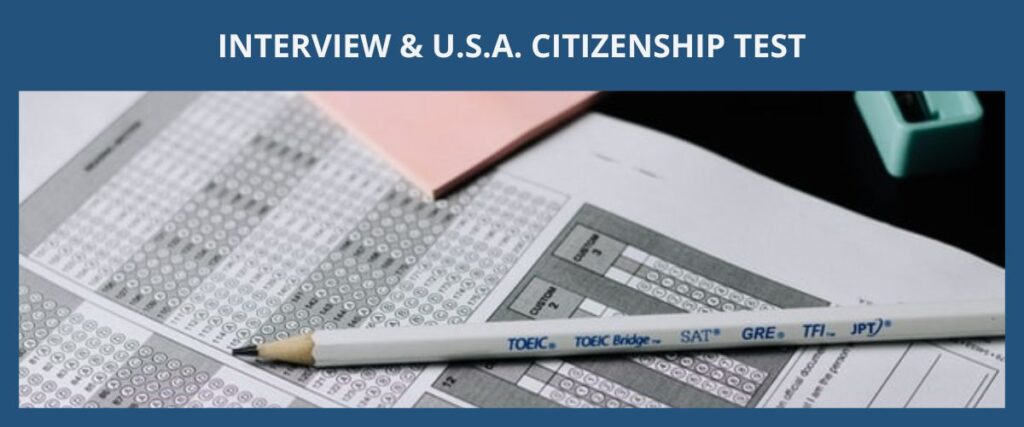Obtaining U.S. citizenship is the final step of immigrating to the United States. There are 3 ways to obtain U.S. citizenship: (1) by being born on the land of the United States, (2) born by a U.S. citizen overseas (outside the United States), and (3) naturalization (typically for green card holders who satisfies certain requirements).
Table of Contents
There are six main subcategories under U.S. citizenship:
- Born in the United States (the parents do not need to be U.S. citizens)
- Born outside the United States (overseas) to U.S. citizen parent(s)
- Has been a green card holder (LPR, lawful permanent resident) for at least 5 years
- Spouse of U.S. citizens who have been a green card holder (LPR, lawful permanent resident) for at least 3 years and remained married to their U.S. citizen spouse
- Served honorably for the U.S. military
- Certain employment related to the U.S. government
The 3 ways to obtain U.S. citizenship are (1) being born on U.S. land, (2) being born by U.S. citizen(s) abroad (outside U.S. land), and (3) naturalization which is usually for green card holders who satisfy certain requirements. The requirements and documentation for U.S. citizenship will vary depending on the situation of the applicant.
U.S. Citizenship of Children Born on U.S. Land
Persons who are born on the lands of the United States are automatically U.S. citizens. The parent(s) of the child born on U.S. land do not need to be U.S. citizens for the child to be a U.S. citizen because of the concept of jus soli where anyone who is born in the territory of the United States has the right to U.S. nationality or citizenship. In other words, the U.S. citizenship of the child is given to the child simply because they were born on U.S. land.
*Children of foreign diplomats who are born in the United States are not considered U.S. citizens.
U.S. Citizenship of Children Born to U.S. Citizen Parent(s)
A child who was born overseas (outside of U.S. land) will still have U.S. citizenship if both parents of the child are U.S. citizens or at least one of the parents is a U.S. citizen. The child automatically obtains their U.S. citizenship through the concept of jus sanguinis where the child is given U.S. citizenship from their parent(s) because of their right of blood. In other words, the child’s U.S. citizenship comes from their U.S. citizen parent(s).
Adopted Children (or Orphans)
Adopted children or adopted orphans can obtain U.S. citizenship through a U.S. citizen parent, however, step-children cannot. The adoption of the child must be finalized before the child turns 16 years old (or 18 years if the child is the natural sibling of the first adopted child). The U.S. citizen should also have been living with the adopted child for at least 2 years and have maintained their legal custody of the child for 2 years.
U.S. Citizen’s Children Born Overseas
The requirements and documents needed for the child’s U.S. citizenship are different depending on whether both parents are U.S. citizens, the gender of the U.S. citizen parent that the child will be obtaining their U.S. citizenship through, the law when the child was born, and if the parents were legally married at the time of the child’s birth.
There are 4 main subcategories of children born to U.S. citizen(s) overseas:
- Born in Wedlock to 2 U.S. Citizens: One U.S. citizen parent must show residence in the United States before the child was born.
- Born in Wedlock to 1 U.S. Citizen (and 1 noncitizen): The U.S. citizen parent must show physical presence in the United States or outlying possession for 5 years before the child was born and 2 years (of that 5-year period) must be after the U.S. citizen parent was 14 years old. If the U.S. citizen parent is not able to show the required time of the physical presence in the United States, the child’s U.S. citizen grandparents’ physical presence in the United States can be used as an alternative. This applies to children born on or after November 14, 1986.
- Born out of wedlock to 1 U.S. Citizen Mother (and 1 Noncitizen Father): The U.S. citizen mother must show physical presence in the United States or outlying possession for 1 continuous year before the child was born. This applies to children born on or after December 23, 1952.
- Born out of wedlock to 1 U.S. Citizen Father (and 1 Noncitizen Mother): The U.S. citizen father must show they (1) had U.S. nationality when the child was born, (2) have a blood relationship with the child, (3) agreed in writing to financially support the child until they turn 18 years old, and (4) the child was legitimated under the law of their residence or domicile, or the father acknowledges paternity of the child in writing under oath, or the paternity of the child is established by a court judgment before the child turned 18 years old.

Naturalizing into U.S. Citizenship
Naturalization is typically for green card holders who are at least 18 years old and have satisfied the required time of physically living in the United States. The green card holder would need to show that they have:
- (1)
- Resided continuously as a green card holder in the United States for at least 5 years (or 3 years for spouses of U.S. citizens) immediately before the naturalization application
- (2)
- Been physically present in the United States for at least 30 months out of that 5-year period (or for at least 18 months out of that 3-year period for spouses of U.S. citizens)
- (3)
- Have resided within the state or district of the USCIS office for at least 3 months immediately before the naturalization application
- (4)
- Remained a person of good moral character, are attached to the principles of the U.S. constitution, and are well-disposed to the good order and happiness of the United States.
After filing their naturalization application with the USCIS, they would need to pass the citizenship tests, which is consisted of an English literacy test and a U.S. civics test at their in-person interview. After the approval of their naturalization application, the green card holder would then attend a U.S. oath of allegiance ceremony where they will turn in their green card and obtain their Certificate of Naturalization after being sworn in.
Naturalization Through Certain employment related to the U.S. government
A green card holder who is employed by the U.S. government, a U.S. firm that is involved in the development of foreign trade and commerce, an American research institute, or a public international organization that the United States is a part of (e.g., the United Nations) only needs to have 1 year of continuous uninterrupted (there cannot be any gaps) physical presence in the United States after becoming a green card holder. These green card holders would need to file an application to preserve their U.S. residency (Form N-470) before naturalization.
Naturalization Through U.S. Military Service (Form N-426)
A person can obtain U.S. citizenship through service with the U.S. military if (1) they served honorably to the U.S. military for at least 1 year during peacetime as a green card holder, (2) enlisted for at least 1 day in the U.S. armed forces during wartime (and the person does not need to be a green card holder), or (3) their death was related to active duty with the U.S. armed forces (posthumous U.S. citizenship for the deceased and green cards or U.S. citizenship for the deceased’s immediate family members). There are various periods of wartime with the most recent period starting from September 11, 2001 to whenever the U.S. president announces the end date.
The person who is naturalizing through their service to the U.S. military would need to file for a Request for Certification of Military or Naval Service (Form N-426). Military service can include the U.S. army, navy, air force, marines, coast guard, or a national guard unit (when it was federally seen as a reserve part of the U.S. armed forces).

The general process and processing time to obtain a U.S. citizenship differs based on the basis of the person’s U.S. citizenship. For example, most green card holders who are naturalizing into a U.S. citizen are required to take an additional U.S. citizenship test where the person must pass an English literacy test and a U.S. civics test.
Naturalization Processing Time
The total time that a naturalization application takes is consisted of the processing time for the (1) naturalization application (Form N-400) with the USCIS and the (2) in-person interview with the citizenship tests and completion of the oath of allegiance. A rough estimate of the naturalization application (Form N-400) can be from 6.5 to 22 months (with an average of around 10 to 14 months). A rough estimate of the scheduling of the interview and oath of allegiance would be from 3 to 6 months. Current estimates of the processing time can be checked here.
Proof of U.S. Citizenship Processing Time
The total time that the proof of a U.S. citizenship application (for U.S. citizen’s children) takes is consisted of the processing time for the (1) U.S. citizenship certificate application (Form N-600 or Form N-600k) with the USCIS or U.S. passport application (DS-11) with the DOS and the (2) in-person interview and completion of the oath of allegiance.
A rough estimate of the proof of U.S. citizenship application (Form N-600) filed within the United States can be from 2.5 to 27.5 months (with an average of around 15 months). A rough estimate of the proof of U.S. citizenship application (Form N-600k) filed overseas (outside the United States) can be from 2.5 to 37.5 months (with an average of around 20 months). A rough estimate of the scheduling of the interview and oath of allegiance would be from 3 to 6 months. Current estimates of the processing time can be checked here.
A rough estimate of the U.S. passport application (DS-11) would be from 3 to 4 months, however, there are expedited services (e.g., 3 business days, 5 to 7 weeks) for the U.S. passport application with additional fees.

General Process of U.S. Citizenship Applications
The general process of U.S. citizenship applications (or naturalization applications) listed below is only generic and does not apply to all U.S. citizenship application cases (i.e., it does not include details regarding exceptions such as military service members, missionaries, certain employees of the U.S. government, etc.)
Step 1: Filing the naturalization application (Form N-400) or proof of U.S. citizenship application (Form N-600 or Form N-600k) to the USCIS, or U.S. passport application (DS-11) to the DOS
Naturalization (Form N-400)
A green card holder who has satisfied all the requirements to become a U.S. citizen (such as continuously living in the United States for 5 years) can file for a naturalization application (Form N-400) with the USCIS.
Proof of U.S. citizenship application (Form N-600 or Form N-600k) or U.S. passport application (DS-11)
A child who is obtaining their U.S. citizenship through their U.S. citizen parent can file a proof of U.S. citizenship application (Form N-600 if in the United States or Form N-600k if outside of the United States) with the USCIS. A U.S. passport application (DS-11) can be filed as an alternative.
Step 2: Fingerprint Appointment (Biometrics)
Green card holders who filed for naturalization will be notified of their fingerprinting appointment at the USCIS Application Support Center. The green card holder should bring the USCIS notice letter, their Permanent Resident Card (green card), and a second form of identification that has a photograph on it (such as a passport, driver’s license, state identification card) to the fingerprinting appointment. During this stage, the FBI will conduct a criminal background check based on the fingerprints collected and USCIS may request additional documents.
Please note, if the person is 75 years old or older, no fingerprinting is needed. Also, fingerprinting will be done at the U.S. consular office if the person is overseas.
Step 3: In-Person Interview and Citizenship Test (for Naturalization)
Naturalization
For green card holders who filed a naturalization application (Form N-400), an in-person interview that includes the citizenship test will be scheduled usually after several months depending on the caseload at the local USCIS offices. The citizenship test will include testing English skills (English literacy test) and the basic understanding of the history of the United States and the U.S. government (U.S. civics test).
During the interview, the USCIS officer will ask about the green card holder’s background, supporting evidence, place and length of residence, character, attachment to the U.S. constitution, willingness to take the Oath of Allegiance to the U.S., and any other questions related to the naturalization application. The decision of the naturalization is usually made at the end of the interview. In certain cases, it is possible for the Oath of Allegiance to take place on the same day the naturalization is approved. If not, the person will receive a notice of the date and location for the oath ceremony.
*If the person cannot attend the U.S. citizenship interview at the scheduled time and does not reschedule beforehand, the case will be administratively closed. If the person does not reopen the case within 1 year of the date it was administratively closed, it will be denied.

English Literacy Test
The English literacy test consists of reading one given English sentence, writing one given English sentence, and speaking in English while answering questions of the USCIS officer.
U.S. Civics Test
The U.S. civics test currently has two versions: the (1) 2008 version and (2) 2020 version. It is a multiple-choice test of 10 questions selected from a list of potential questions from the USCIS database. The 2020 version U.S. civics test pulls the 10 selected questions from a list of 128 potential questions and the 2008 version pulls the 10 selected questions from a list of 100 potential questions. To pass the U.S. civics test, the green card holder would need to answer 6 out of the 10 selected questions given correctly.
The version that the green card holder will take will depend on the filing date of their naturalization application and when their interview is scheduled. The instructions to determine which version the person can take can be found here.
Modifications and Exceptions of U.S. Citizenship Test
There are modifications and exceptions to the U.S. citizenship test for certain types of people who are over a specific age or have disabilities. The exemptions related to the U.S. Citizenship Tests:
- (1)
- If the person is over 50 years old and has been a green card holder (LPR, lawful permanent resident) for at least 20 years, then the English test is not required and the person can choose the language for the U.S. civics test.
- (2)
- If the person is over 55 years old and has been a green card holder (LPR, lawful permanent resident) for at least 15 years, then the English test is not required and the person can choose the language for the U.S. civics test.
- (3)
- If the person is over 65 years old and has been a green card holder (LPR, lawful permanent resident) for at least 20 years, then the English test is not required and the person can choose the language for the U.S. civics test. The U.S. civic test questions given will only be from a list of 20 questions marked with an asterisk.
- (4)
- If the person has a physical or mental disability and filed a Medical Certification for Disability Exceptions (Form N-648), the person would not need to take the U.S. citizenship tests.
Please note, if exemptions are used for the English test, the person must be accompanied by an interpreter.
Children Obtaining U.S. Citizenship Through U.S. Citizen Parent
Generally, for a child to obtain their U.S. citizenship through their U.S. citizen parent, the child and the U.S. citizen parent or legal guardian (if they applied on behalf of a child under 18 years old) will need to attend an in-person interview. The interview requirement can only be waived if the documents are enough in the administrative records of the USCIS or if the application is attached with a consular report of birth abroad (FS-240), child’s valid U.S. passport (that was issued for a full 5- or 10-year period), or a certificate of naturalization of the child’s parents(s).
Step 4: Oath of Allegiance
Naturalization
The green card holder will take the U.S. Oath of Allegiance as the final step of their naturalization application. The green card holder will publicly swear allegiance to the United States in a ceremony administered by the USCIS or a court. The person will turn in their permanent resident card (green card) before the oath ceremony and will be given a Certificate of Naturalization after being sworn in. The U.S. Oath of Allegiance is waived for applicants who are underage, or have a mental or physical disability. It is strongly recommended to apply for a U.S. passport immediately after taking the oath to avoid complications if international traveling is expected.
Children Obtaining U.S. Citizenship Through U.S. Citizen Parent
For children who mainly reside overseas and filed a citizenship and issuance of certificate application (Form N-600k) to obtain their U.S. citizenship through their U.S. citizen parent, they will be required to take the U.S. Oath of Allegiance in the United States. Typically, the U.S. Oath of Allegiance is waived for applicants who are under 14 years old.
Obtaining U.S. citizenship means gaining certain benefits from the United States but also accepting certain obligations and responsibilities to the United States. The main benefits of the U.S. citizenship include protection from deportation, being able to stay overseas (outside the United States) for any amount of time (unlike the general 6-month restriction for green card holders), work a federal job, run for office, and more. The main obligations of the U.S. citizenship include paying U.S. taxes, being required to attend jury duty, and serving the United States when required to. U.S. citizenship is either obtained by birth (either being born on U.S. land or to a U.S. citizen parent) or by naturalization (where the green card holders satisfies certain U.S. citizenship requirements).
If you have a naturalization or U.S. citizenship related immigration question, please fill out our contact us form or send us an email with some basic information about your background and your immigration needs. We will do our best to respond within 48 hours.
How we can help?
Kylie Huang Law’s immigration attorney will help identify if the client is qualified to naturalize into a U.S. citizen or is eligible to obtain U.S. citizenship. We will work closely with our clients to prepare their naturalization or proof of U.S. citizenship application and we will also strategize on how the application should be presented in the filings and in the interview to achieve the best chances of approval. It is advised and common practice to retain an immigration attorney for certain unusual naturalization or proof of U.S. citizenship applications due to the complexities in the immigration process and visa requirements.
What does the typical process look like to retain (hire) us?
- Step 1:
- Step 2:
- Step 3:
- Step 4:
- Step 5:
- a.
- b.
- c.
- Step 6:
- Step 7:
- Step 8:
- Fill out the form (with some basic information on what your immigration needs are)
- Sign up and log into the client portal to schedule an appointment online
- Attend scheduled appointment (typically a phone call or zoom meeting)
- Retainment (signing a contract to hire us)
- Start processing case
- Gathering required documents
- Preparing paperwork
- Confirming contents of documents that will be submitted
- Filing the case
- Following up on the status of the case
- Close the case when a final determination is issued
- Step 1:
- Step 2:
- Step 3:
- Step 4:
- Step 5:
- a.
- b.
- c.
- Step 6:
- Step 7:
- Step 8:
- Fill out the form (on what your immigration needs are)
- Sign up and log into the client portal to schedule an appointment
- Attend scheduled appointment (typically a phone call or zoom)
- Retainment (signing a contract to hire us)
- Start processing case
- Gathering required documents
- Preparing paperwork
- Confirming contents of documents that will be submitted
- Filing the case
- Following up on the status of the case
- Close the case when a final determination is issued
- Step 1:
- Step 2:
- Step 3:
- Step 4:
- Step 5:
- a.
- b.
- c.
- Step 6:
- Step 7:
- Step 8:
- Fill out the form (on what your immigration needs are)
- Sign up and log into the client portal to schedule appointment
- Attend scheduled appointment (typically a phone call or zoom)
- Retainment (hire us)
- Start processing case
- Gathering required documents
- Preparing paperwork
- Confirming content of documents that will be submitted
- Filing the case
- Following up on the case status
- Close the case when a final determination is issued

